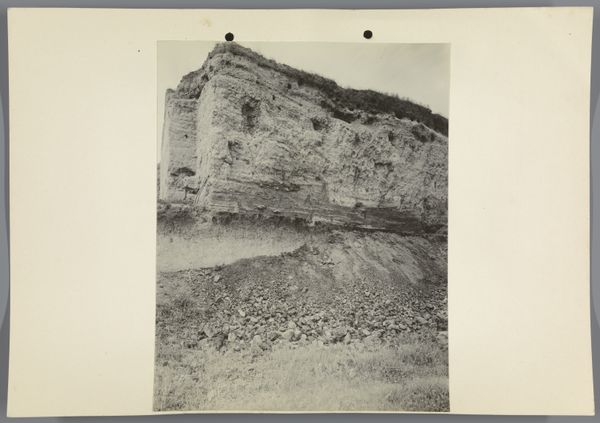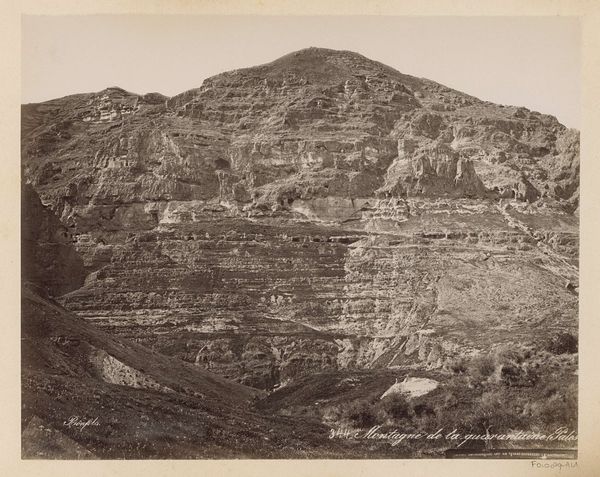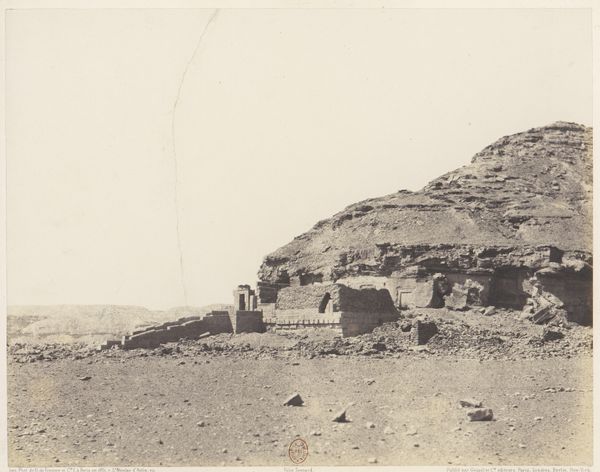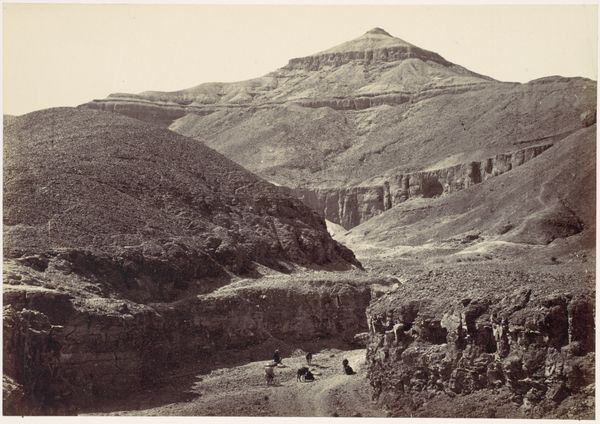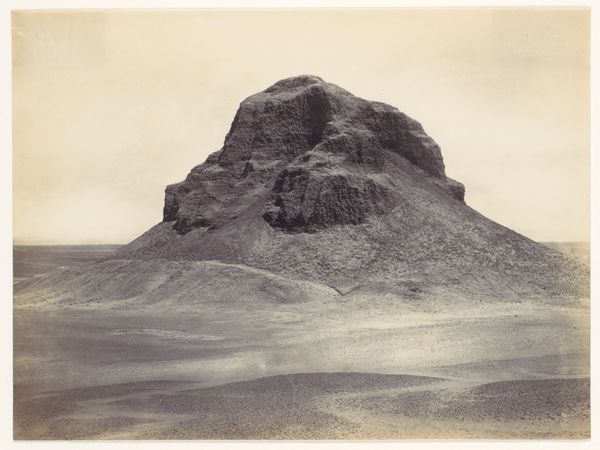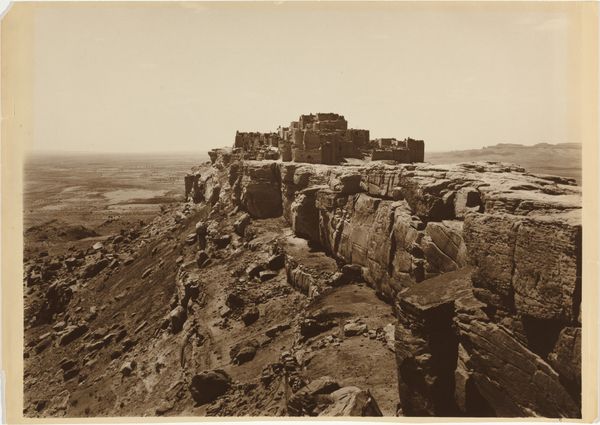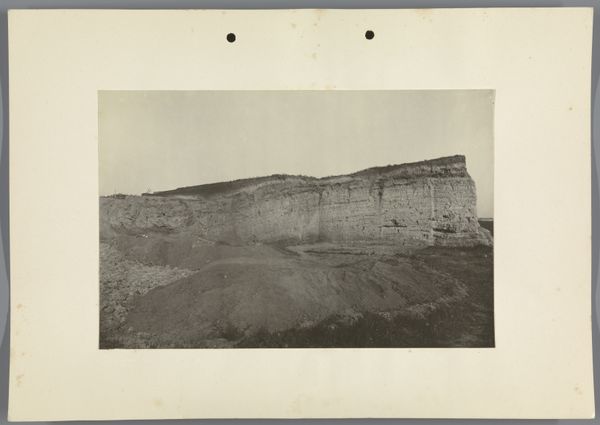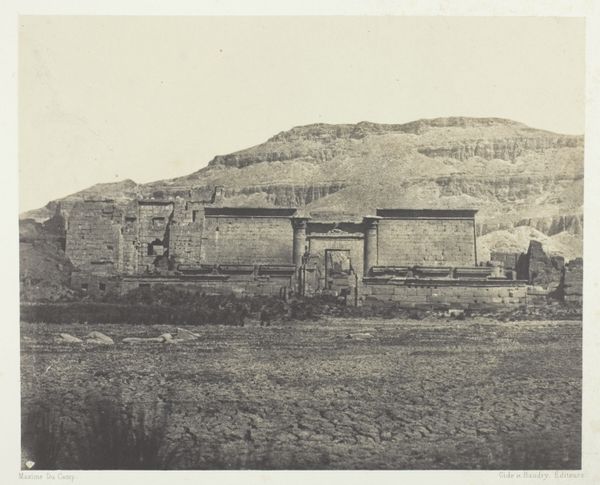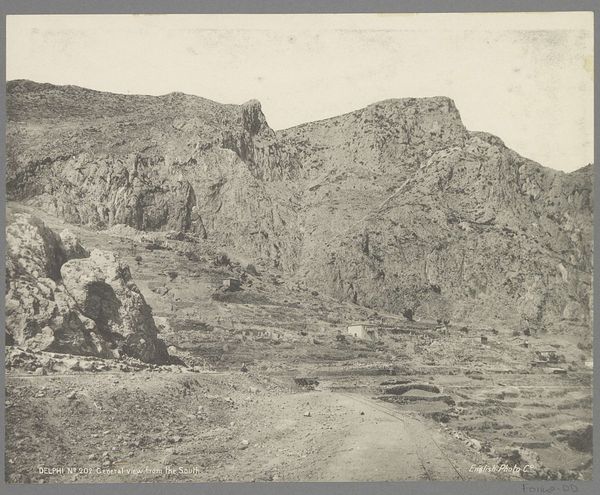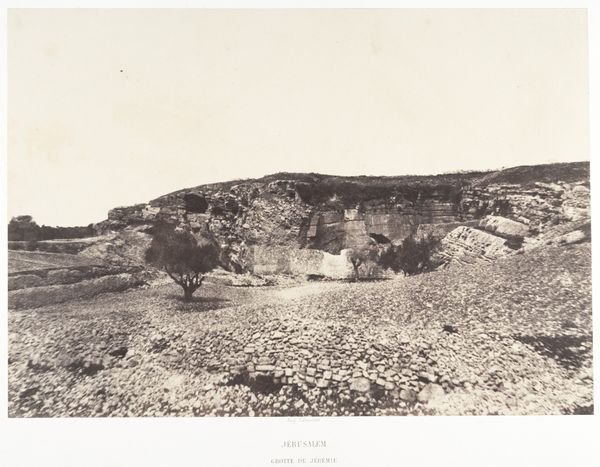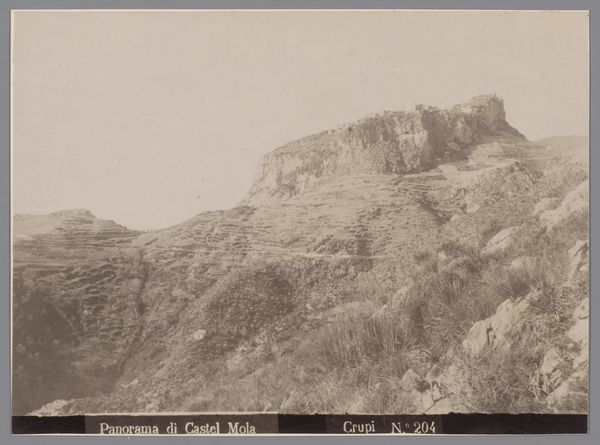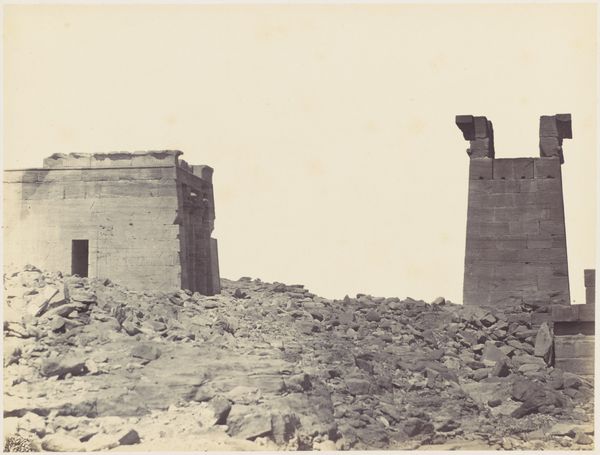
Nubie. Forteresse D'Ibrym (Ancienne Premmis). Vue prise au sud. 1850
0:00
0:00
daguerreotype, photography
#
landscape
#
daguerreotype
#
photography
#
ancient-mediterranean
#
orientalism
#
realism
Copyright: Public Domain
Curator: So this is Maxime Du Camp's "Nubie. Forteresse D'Ibrym (Ancienne Premmis). Vue prise au sud," a daguerreotype taken in 1850. Editor: Striking! It feels barren and ancient. The contrast is wonderful – the sharp detail of the fortress against what looks like endless rocky terrain makes it pop. There is desolation and serenity all at once, can that even be possible? Curator: Absolutely! Du Camp was part of a French archaeological mission, and this photo captures the grandeur of the site, really emphasizing the lasting presence of the past. It's about visualizing power and history but, importantly, it is an early photographic record. Editor: Yes, the starkness is probably due to the medium itself, a daguerreotype? I can imagine it's quite different seeing this landscape in person. Did he stage it for some political point? Curator: He certainly didn’t invent the fortress! But photography itself, as a "truthful" medium, certainly shaped European perception. It's documenting but also creating an image of a colonized landscape. It certainly plays into Orientalism's view. The image flattens Nubia’s lived reality through the photographer’s selective gaze and technology of that period. Editor: The composition guides the eye directly to that imposing structure—makes you think of civilizations, their rises and falls, the slow crumble. How much, though, does that lens of Orientalism really play a role? Curator: Hugely. Consider how photographs of Egypt and the Near East were displayed and consumed back in Europe. They fuelled romantic notions, but also justifications for colonial intervention, depicting these places as "needing" external control. It influenced politics, social thinking, and the development of art styles. It helped the viewers see and experience an unfamiliar civilization. Editor: It really prompts questions about how we look and what we look *for* when we’re confronted with something so old, presented in a new way. Very affecting; history framed. Curator: Indeed, seeing Du Camp’s historical shot—almost a factual depiction, still generates that certain enigmatic romanticism and a longing to know more about it.
Comments
No comments
Be the first to comment and join the conversation on the ultimate creative platform.
